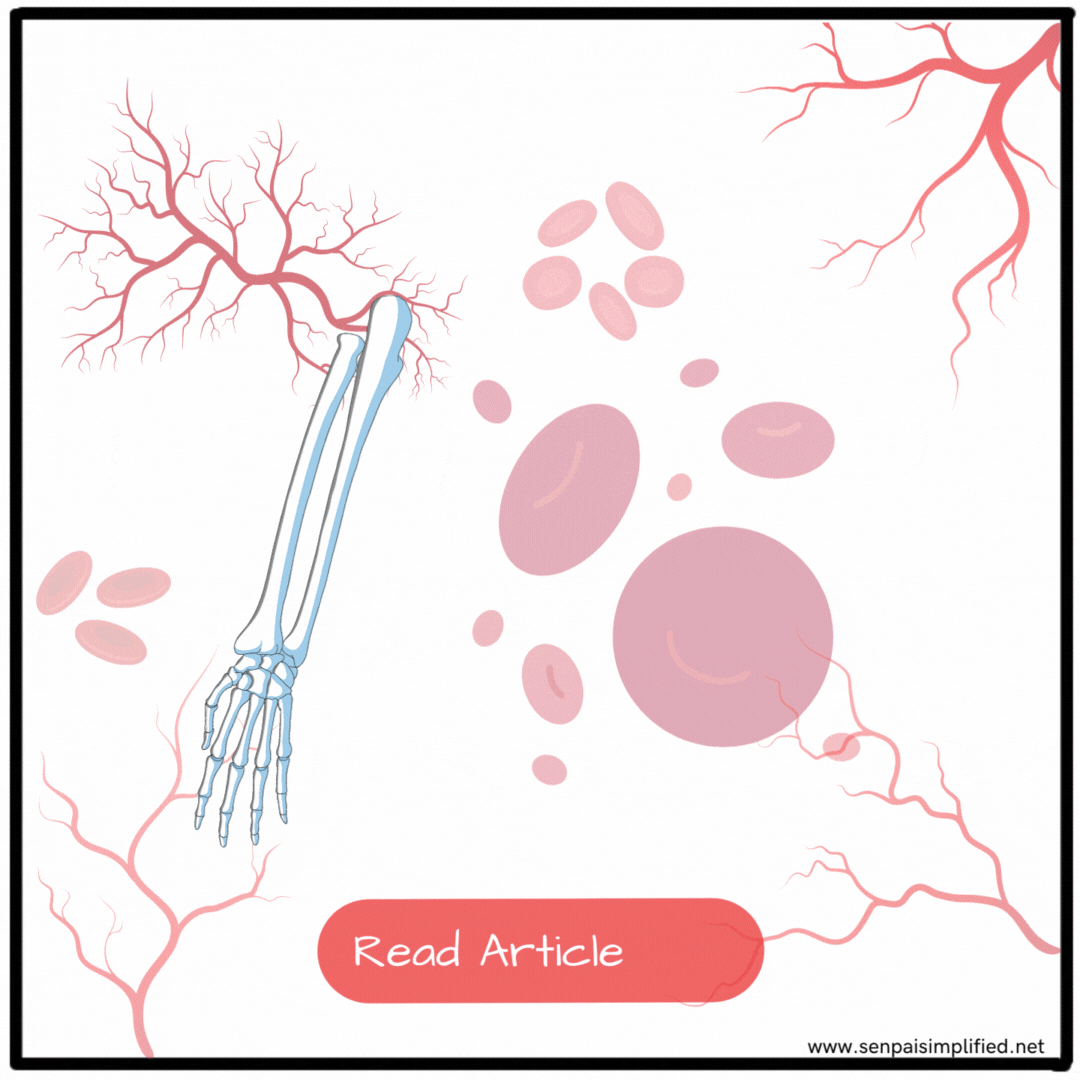The radial artery is a major blood vessel in the human body. The radial artery has significant clinical relevance, serving as a popular site for arterial punctures and as a potential conduit for coronary artery bypass grafting. Understanding the characteristics and functions of the radial artery is essential in various medical procedures and interventions:
Course of the Radial Artery
It originates at the radial neck, situated on the tendon of the biceps muscle, and runs down the forearm towards the wrist. As it approaches the wrist, the radial artery thins out and lies superficially between the flexor carpi radialis and brachioradialis muscles. It can be palpated at the wrist as the radial pulse.
At this point, the radial artery gives off the superficial radial branch, which supplies the superficial palmar arch. The radial artery then passes deep to the tendons of the abductor pollicis longus and extensor pollicis brevis muscles to enter the anatomical snuffbox.
From there, it pierces the first dorsal interosseous muscle (between the two heads) and the adductor pollicis muscle (between the two heads) between the first and second metacarpals to join with the deep branch of the ulnar artery and form the deep palmer arch.
Branches
Radial recurrent artery – Arises just below the elbow, runs upwards deep to the brachioradialis, and anastomoses with the radial collateral artery in front of the lateral epicondyle of the humerus.
Muscular branches – supply lateral muscles of the forearm.
Palmar carpal branch – arises near the lower border of the pronator quadratus, runs medially deep to the flexor tendons, and anastomoses with the palmar carpal branch of the ulnar artery to form the palmar carpal arch (supplies bones and joints at the wrist).
Dorsal carpal branch – forms the dorsal carpal arch with a branch of the ulnar artery.
Superficial palmar branch – arises just before the radial artery leaves the forearm and winds backwards, passes through the thenar muscles, and anastomoses with the terminal portion of the ulnar artery to complete the superficial palmar arch.
The Deep Palmer Arch
The deep palmer arch is mainly formed by the radial artery and is located superficially to the metacarpal bones and deep to the long flexor tendons.
It supplies blood to the lateral one and a half fingers and gives off several branches, including:
- Dorsal carpal branch: divides into the dorsal digital arteries and enters the fingers.
- First dorsal metacarpal artery: supplies the adjacent sides of the index finger and thumb.
- Princeps pollicis artery: supplies the thumb.
- Radialis indicis artery: supplies the index finger
Relations
The brachial artery is accompanied by venae comitantes (accompanying veins).
- Anteriorly – overlapped by the brachioradialis muscle in the upper portion, covered by skin and fascia in the lower half.
- Posteriorly – related to muscles attached to the anterior surface of the radius, including the biceps brachii, flexor pollicis longus, flexor digitorum superficialis, and pronator quadratus.
- Medially – related to the pronator teres muscle in the upper one-third and the tendon of the flexor carpi radialis in the lower two-thirds.
- Laterally – brachioradialis muscle and the radial nerve.
Quiz:
[quiz-cat id=”1299″]




Leave a Reply